#when to use agile vs waterfall
Explore tagged Tumblr posts
Text
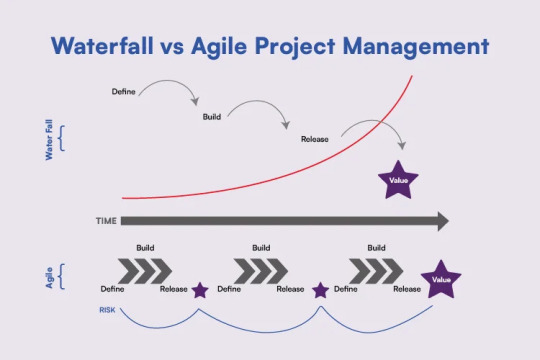
Agile methodology is a flexible and iterative strategy that allows teams to quickly adjust to changing project needs and deliver high-quality solutions in less time. In software development, agile is frequently utilized.
0 notes
Text
Agile Vs Waterfall Methodology: Which Is the Best for Your Project?
"Choosing the right project methodology is key to success. Delve into the battle of Agile vs. Waterfall methodologies and find out which one aligns best with your project's unique needs. Unlock the power of efficient development and make informed decisions to propel your project forward." https://jumpgrowth.com/agile-vs-waterfall-methodology/
0 notes
Text
AI Engineer vs. Software Engineer: Career Comparison
When it comes to choosing between a career as an AI Engineer or a Software Engineer, it's important to understand the nuances of each role. While both involve working with technology and solving problems, their skill sets, day-to-day tasks, and career paths differ significantly.
AI Engineer: An AI Engineer focuses on creating systems and algorithms that allow machines to perform tasks that typically require human intelligence. This can include natural language processing (NLP), computer vision, machine learning, deep learning, and robotics. AI Engineers build systems that "learn" from data and improve over time, using statistical models, neural networks, and other advanced techniques.
The typical tasks of an AI Engineer involve researching new AI models, selecting the right data for training, writing machine learning algorithms, and fine-tuning models for better performance. AI Engineers usually work with large datasets, applying mathematical and statistical knowledge to build robust AI solutions. As AI technologies evolve rapidly, professionals in this field need to stay updated with cutting-edge research and trends in AI and data science.
Software Engineer: Software Engineers, on the other hand, are responsible for designing, developing, and maintaining software applications that run on various devices or platforms. This can range from web applications, mobile apps, desktop software, to enterprise-level systems. The primary focus of a software engineer is to write clean, efficient, and scalable code. They typically work with programming languages such as Java, Python, C++, or JavaScript, and are skilled in problem-solving and system design.
Software Engineers work with different development methodologies, including agile, waterfall, or DevOps, and ensure that applications are functional, user-friendly, and meet the needs of their users. Their responsibilities also include debugging, testing, and optimizing software to ensure it is free of errors and operates smoothly. Unlike AI Engineers, they do not typically need expertise in machine learning or deep learning, though familiarity with such concepts may be beneficial in certain roles.
Key Differences:
Skill Set: AI Engineers require expertise in machine learning, deep learning, data science, and often advanced mathematics. Software Engineers need strong coding skills, understanding of algorithms, and system design.
Focus: AI Engineers create intelligent systems that mimic human behavior, while Software Engineers focus on creating functional software applications.Tools and Technologies: AI Engineers work with frameworks like TensorFlow or PyTorch, while Software Engineers work with development tools like Git, IDEs, and frameworks like React or Django.
Career Outlook: Both fields are in demand, but AI is rapidly growing with the expansion of automation and data analytics. Software engineering remains a broad and stable field, offering opportunities in virtually every industry. Depending on your interests—whether in artificial intelligence or broad software development—both career paths offer promising futures.
Ultimately, the choice between AI Engineering and Software Engineering depends on your passion for working with intelligent systems versus building software solutions for various industries.
0 notes
Text
Choosing Between Software Development and AI Engineering: A Guide for Freshers
Overview of AI vs. Traditional Engineering
As technology evolves, the choice between pursuing a career in Artificial Intelligence (AI) or traditional engineering is becoming increasingly relevant. Both paths offer unique opportunities and challenges, and understanding their distinctions is crucial for making an informed decision.
Key Differences Between AI and Traditional Engineering
Development Methodologies
Traditional Engineering typically follows a linear development model, such as the Waterfall model. This approach emphasizes comprehensive planning, documentation, and a clear sequence of phases: requirements gathering, design, implementation, testing, and maintenance. Each phase must be completed before proceeding to the next, which can lead to rigidity in adapting to change.
AI Development: Often employs iterative and agile methodologies. This flexibility allows for continuous learning and adaptation based on real-world data. AI systems evolve through repeated training, evaluation, and refinement cycles, making them more responsive to changing requirements.
Data Dependency
Traditional Software: Relies on predefined rules and logic. The quality of the software is largely determined by the accuracy of the code and specifications provided at the start of the project.
AI Systems: Heavily dependent on data quality and quantity. The performance of AI models is directly influenced by the data they are trained on; poor data can lead to biased or inaccurate outcomes
Algorithm Complexity
Traditional Engineering: Utilizes straightforward algorithms that follow deterministic logic. This predictability allows for easier tracing of software behavior back to the code.
AI Development: Involves complex algorithms, including machine learning and deep learning models that can learn from data and make decisions based on patterns. This complexity can make AI systems less interpretable compared to traditional software.
Problem-Solving Capabilities
Traditional Systems: Are proficient at solving specific tasks they are programmed for but lack the ability to adapt or learn from new information.
AI Systems: Excel in dynamic environments, adapting to unforeseen challenges and generalizing knowledge across diverse problem domains. They often outperform traditional computing in complex scenarios that require nuanced understanding.
Decision-Making Processes
Traditional Computing: Decisions are deterministic, adhering strictly to predefined rules without the capacity for nuance or contextual awareness.
AI Decision-Making: Involves probabilistic reasoning where machine learning models assess probabilities based on data patterns, facilitating a more nuanced decision-making process akin to human cognition.
Career Path Considerations
When choosing between AI engineering and traditional software development, consider the following factors:
Interest in Data vs. Software Applications: If you enjoy working with data, solving complex problems, and utilizing statistical methods, AI engineering may be a suitable path. Conversely, if you prefer building software applications using various programming languages and frameworks, traditional software development might be a better fit.
Job Market Trends: The demand for AI professionals is rapidly increasing as businesses seek to leverage data-driven insights. Traditional engineering roles remain essential but may not offer the same growth potential as AI-related positions in emerging technologies like machine learning and automation.
Skill Set Requirements: AI engineering typically requires knowledge of algorithms, statistics, and programming languages suited for data manipulation (e.g., Python). Traditional engineering focuses more on software design principles, coding practices, and project management skills.
Conclusion
Arya College of Engineering & I.T. has Both AI and traditional engineering paths that offer rewarding careers but cater to different interests and skill sets. As technology continues to advance, hybrid roles that integrate both fields are likely to emerge. Therefore, aspiring professionals should evaluate their interests in problem-solving approaches, data-handling capabilities, and adaptability to choose the path that aligns best with their career aspirations. Understanding the strengths and limitations of each approach will enable individuals to harness their potential effectively in an increasingly complex digital landscape.
0 notes
Text
Agile vs. Waterfall: Choosing the Right Methodology
In the realm of software development, selecting the right methodology is crucial for project success. Agile and Waterfall are two of the most popular methodologies, each with distinct approaches and benefits. Understanding the differences between these methodologies can help businesses and teams make informed decisions based on their project needs and goals. This article explores Agile and Waterfall methodologies, comparing their features, advantages, disadvantages, and suitability for various project types.
What Is Agile?
Agile is a flexible, iterative approach to software development that emphasizes collaboration, customer feedback, and adaptability. It breaks projects into small increments called "sprints," allowing teams to deliver functional software quickly and make continuous improvements.
Agile includes iterative development, customer collaboration, flexibility, and teamwork. Its incremental approach ensures that progress is measurable and aligned with user requirements at each step.
Advantages of Agile
Agile offers faster delivery of usable software, improved customer satisfaction through frequent updates, better risk management due to continuous feedback and adjustments, and increased team collaboration and morale.
Disadvantages of Agile
Despite its benefits, Agile has drawbacks, such as requiring frequent communication, which can be time-intensive. It is also challenging to predict costs and timelines upfront and is not ideal for projects with rigid requirements or low stakeholder involvement.
What Is Waterfall?
Waterfall is a linear and sequential methodology where each phase of the project must be completed before moving to the next. It follows a structured progression from planning to deployment, making it suitable for projects with well-defined requirements.
Waterfall emphasizes a linear process, defined scope, thorough documentation, and predictability. Each phase is clearly demarcated, ensuring that the project progresses in a step-by-step manner.
Advantages of Waterfall
Waterfall provides a clear structure and predictable timelines, making it easier to manage projects with fixed requirements. Comprehensive documentation ensures continuity, and the methodology is well-suited for industries with strict regulatory compliance.
Disadvantages of Waterfall
However, Waterfall’s rigidity limits flexibility in accommodating changes. Issues are often discovered late due to the sequential nature, and delivery time can be prolonged before a usable product is available. Additionally, there is a higher risk of failure if initial requirements are misunderstood.
When to Choose Agile
Agile is the preferred choice in the following scenarios:
Dynamic Requirements: When project requirements are likely to change frequently.
Customer-Centric Projects: When active stakeholder involvement is critical.
Quick Delivery: When delivering functional software early and often is a priority.
Innovative Solutions: When exploring new technologies or solutions with uncertain outcomes.
Cross-Functional Teams: When the team benefits from high collaboration and shared ownership.
Examples of Agile Use Cases include mobile app development, startups and tech-driven projects, and continuous improvement initiatives.
When to Choose Waterfall
Waterfall is more suitable in the following scenarios:
Fixed Requirements: When the project’s scope and requirements are well-defined and unlikely to change.
Regulatory Compliance: When detailed documentation is required to meet industry standards.
Predictable Timelines: When strict deadlines must be adhered to without room for iteration.
Simple Projects: When the project has a clear path and minimal complexity.
Client Agreements: When contracts require detailed upfront planning and fixed deliverables.
Examples of Waterfall Use Cases include infrastructure projects, government and defense projects, and traditional industries with established processes.
Hybrid Approaches: Combining Agile and Waterfall
In some cases, a hybrid approach that combines elements of Agile and Waterfall may be the best option. This approach leverages the predictability of Waterfall for initial planning while adopting Agile practices for development and testing phases.
Benefits of a Hybrid Model
A hybrid approach balances flexibility with structure, accommodates stakeholder feedback during development, and reduces risks associated with rigid or overly fluid methodologies.
Challenges
It requires careful coordination to manage transitions between methodologies and may increase complexity in planning and execution.
Key Factors to Consider When Choosing a Methodology
Project Complexity: Assess the technical and organizational challenges involved.
Team Expertise: Consider the familiarity and skill level of the team with each methodology.
Stakeholder Requirements: Evaluate the level of stakeholder involvement and flexibility needed.
Budget and Timeline: Determine the project’s financial constraints and delivery deadlines.
Industry Standards: Align with regulatory and compliance requirements specific to your industry.
Risk Tolerance: Choose a methodology that aligns with your organization’s risk management strategy.
Conclusion
Both Agile and Waterfall methodologies have their merits and limitations. Agile offers flexibility and adaptability, making it ideal for dynamic projects, while Waterfall provides a structured approach for projects with fixed requirements. The decision to choose between Agile and Waterfall depends on various factors, including project goals, stakeholder expectations, and team capabilities. In some cases, a hybrid approach may offer the best of both worlds.
By understanding the strengths and weaknesses of each methodology, teams can select the right approach to maximize efficiency, minimize risks, and deliver successful outcomes. Ultimately, the right choice will depend on the unique needs of the project and the organization.
0 notes
Text
What is the Difference Between Agile and Waterfall Methodologies?

When it comes to software development and project management, choosing the right methodology can significantly impact the success of your project. Among the most popular methodologies are Agile and Waterfall. Each approach offers unique benefits and challenges, making them suitable for different types of projects. In this blog, we’ll explore the key differences between Agile and Waterfall methodologies, helping you determine which one is the best fit for your project.
1. Overview of Agile and Waterfall
What is Agile?
Agile is a flexible, iterative approach to project management and software development. It focuses on delivering small, incremental changes through collaboration, continuous feedback, and iterative development cycles called sprints. Agile is best suited for projects where requirements evolve over time.
Key Features of Agile:
Iterative and incremental delivery.
Strong collaboration with stakeholders.
Emphasis on flexibility and adaptability.
Regular feedback and adjustments.
What is Waterfall?
Waterfall is a linear, sequential methodology where the project is divided into distinct phases: requirements, design, development, testing, and deployment. Each phase must be completed before moving to the next, making it a rigid approach. Waterfall works well for projects with clearly defined and unchanging requirements.
Key Features of Waterfall:
Linear and sequential process.
Focus on upfront planning and documentation.
Minimal changes once the project starts.
Clear milestones and deliverables for each phase.
2. Key Differences Between Agile and Waterfall
AspectAgileWaterfallApproachIterative and flexibleLinear and rigidProject PhasesOverlapping and iterativeSequential and non-overlappingRequirement ChangesAccommodates changes throughout developmentDifficult to make changes after the design phaseCustomer InvolvementHigh, with regular feedbackLimited, primarily during initial and final stagesDeliveryIncremental, with working software after each sprintDelivered at the end of the projectDocumentationLight, focuses on collaborationExtensive, detailed upfront documentationTestingContinuous, integrated with developmentOccurs after the development phaseRisk ManagementAdaptive, risks are addressed in each iterationHigh, risks identified upfront but harder to mitigate later
3. Advantages and Disadvantages
Advantages of Agile:
Flexibility: Adapts to changing requirements, ensuring the final product meets user needs.
Customer Satisfaction: Regular updates and customer involvement lead to higher satisfaction.
Early Value Delivery: Working software is delivered incrementally.
Improved Collaboration: Encourages teamwork between developers, stakeholders, and clients.
Disadvantages of Agile:
Requires Discipline: Needs a skilled and collaborative team to succeed.
Less Predictability: Project timelines and budgets can be harder to estimate upfront.
Documentation May Suffer: Emphasis on collaboration can result in insufficient documentation.
Advantages of Waterfall:
Clear Structure: Sequential phases provide a well-defined roadmap.
Predictability: Timelines and budgets are easier to estimate.
Thorough Documentation: Comprehensive documentation aids long-term maintenance.
Ideal for Stable Projects: Works well for projects with fixed requirements.
Disadvantages of Waterfall:
Inflexibility: Difficult to adapt to changes once the project has started.
Late Testing: Bugs and issues may not be identified until later stages.
Customer Involvement: Limited interaction with stakeholders during the project.
Delayed Delivery: The final product is delivered only at the end of the process.
4. When to Use Agile vs. Waterfall?
Use Agile When:
The project has evolving or unclear requirements.
Frequent customer feedback is essential.
You need to deliver working software quickly.
Collaboration between cross-functional teams is a priority.
Use Waterfall When:
Requirements are well-defined and unlikely to change.
The project is straightforward and predictable.
Extensive documentation is required (e.g., for government or regulated industries).
The team or client prefers a structured approach with clear milestones.
5. Combining Agile and Waterfall: Hybrid Models
In some cases, teams opt for a hybrid approach that combines the strengths of both methodologies. For example:
Use Waterfall for high-level planning and requirements gathering.
Use Agile for iterative development and testing.
This approach provides the structure of Waterfall while maintaining the flexibility of Agile, making it suitable for complex projects with both stable and dynamic components.
Conclusion: Both Agile and Waterfall have their merits and drawbacks, and the right choice depends on your project’s specific needs. Agile is ideal for projects requiring flexibility and frequent feedback, while Waterfall suits projects with clear, stable requirements. By understanding the differences and evaluating your project goals, you can select the methodology that best aligns with your objectives.
#awstraining#cloudservices#softwaredeveloper#training#iot#data#azurecloud#artificialintelligence#softwareengineer#cloudsecurity#cloudtechnology#business#jenkins#softwaretesting#onlinetraining#ansible#microsoftazure#digitaltransformation#ai#reactjs#awscertification#google#cloudstorage#git#devopstools#coder#innovation#cloudsolutions#informationtechnology#startup
0 notes
Text
Comparing Services: Mobile Application Development Companies in Missouri

Missouri has emerged as a hub for mobile application development, with many companies offering a wide range of services to meet the growing needs of businesses and individuals. When looking to create a mobile application, whether it’s for iOS, Android, or cross-platform, it’s essential to compare the services, capabilities, and expertise of different companies to find the best fit. Below is an overview of how mobile app development companies in Missouri stand out and what to consider when choosing one, Website development company in Missouri.
1. Expertise and Specialization
Mobile app development companies vary in their technical expertise and areas of specialization. Some companies excel in native app development, focusing on either iOS or Android. For businesses requiring apps that cater to both platforms, cross-platform development using technologies like Flutter, React Native, or Xamarin might be the right choice.
Native App Development: Offers a highly optimized experience for iOS and Android but requires separate development efforts.
Cross-Platform Development: Provides a unified app codebase for both platforms, reducing time and costs but may sacrifice performance in complex applications.
Companies in Missouri often boast technical expertise in native development while also being well-versed in cross-platform solutions to offer flexibility to their clients, Website development company in Missouri.
2. Customization and Design
A key consideration when comparing mobile app development companies is the level of customization and design capabilities. The company’s ability to understand the client’s vision and translate that into a functional, visually appealing app can make or break a project, Mobile app development company in Missouri.
Missouri-based companies, known for a strong Midwest work ethic, often emphasize customer collaboration. Their teams typically include designers who specialize in UI/UX (User Interface/User Experience) design, ensuring that apps are not only functional but intuitive and user-friendly.
UI/UX Design: Top companies prioritize user-centric designs that promote engagement and ease of use.
Custom Solutions: A good mobile app developer will tailor the app to fit the unique needs of the business, rather than relying on cookie-cutter solutions, Best mobile application development company in Missouri.
3. Agile Development Process
The development process plays a crucial role in the success of a mobile app. Many Missouri-based companies adopt Agile methodologies, which allow for iterative development and client feedback throughout the project lifecycle.
Agile Methodologies: Promote flexibility and allow for frequent updates, feedback, and improvements as the project progresses.
Waterfall Approach: Some companies still use the traditional Waterfall method, which may be preferable for clients with very well-defined project scopes.
Comparing the approach and flexibility of companies is essential, especially for projects that are complex or likely to evolve during development.
4. Cost and Time Efficiency
One of the most significant factors in choosing a mobile app development company is the cost. Missouri-based companies tend to offer competitive pricing compared to tech hubs on the coasts. However, it’s important to evaluate the balance between price, quality, and time efficiency, Mobile application development company in Missouri.
Fixed-Price vs. Hourly Billing: Some companies may offer fixed-price contracts, while others bill by the hour. It’s essential to understand the pricing structure and which option fits the client’s budget and timeline.
Turnaround Time: Time-to-market is critical in today’s competitive environment. Some companies specialize in rapid prototyping and deployment, while others may take longer due to more in-depth processes.
5. Support and Maintenance
Post-launch support and maintenance are essential for the long-term success of a mobile app. Many companies in Missouri offer ongoing support packages that include bug fixes, updates, and enhancements as the app evolves and scales.
Ongoing Maintenance: Ensuring the app remains functional and up-to-date with operating system changes and security patches.
Future-Proofing: Some companies offer consulting services to ensure apps are built with scalability in mind, allowing future updates without requiring a complete redesign.
6. Reputation and Client Feedback
Reputation speaks volumes when comparing mobile app development companies. Reading reviews and client testimonials, checking portfolios, and even asking for references can help provide insights into a company’s track record.
Portfolios: A look at past projects will show if the company has experience in similar industries or project types.
Client Feedback: Reading client reviews and case studies can provide insight into a company’s reliability and customer satisfaction levels.
Conclusion
When comparing mobile app development services in Missouri, businesses should focus on a company’s technical expertise, customization capabilities, development process, cost efficiency, support options, and reputation. Each factor plays a critical role in determining the success of a mobile app. By carefully evaluating these elements, companies can find a mobile app developer that meets their needs and helps bring their vision to life, Top mobile application development company in Missouri.
0 notes
Text
Breaking Down App Development Costs in Europe: Key Factors to Consider
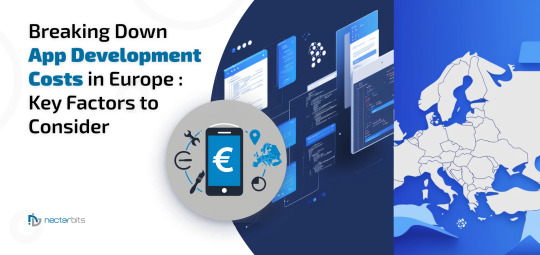
When planning to develop an app in Europe, understanding the associated costs is crucial for project budgeting and long-term success. Various factors impact the final price, from design and app development to post-launch support. Here’s a breakdown of the key considerations:
1. App Complexity
Simple Apps: Basic functionality with minimal design features (e.g., calculators, content display apps). Development costs are typically lower.
Moderately Complex Apps: Involves APIs, databases, and enhanced UI/UX (e.g., social media or e-commerce apps). These apps are more expensive due to integration needs and complex functionalities.
2. Location and Expertise of the Development Team
Western Europe: Countries like Germany, France, and the UK have higher development rates due to the high cost of living and developer expertise. Hourly rates range between €70–€150.
Eastern Europe: Countries like Poland, Ukraine, and Romania offer skilled developers at more affordable rates, typically between €30–€70 per hour, while maintaining a strong tech infrastructure.
3. Technology Stack
Native Development: Developing separate apps for iOS and Android increases costs, as two development teams may be required.
Cross-Platform Development: Using frameworks like React Native or Flutter allows building one app for both platforms, reducing time and costs.
4. App Design
Custom vs. Template Design: Custom UI/UX design tailored to your brand is more expensive but delivers a unique user experience. Template-based designs reduce costs but might lack differentiation.
Motion Design and Animations: Advanced animations or interactions can significantly raise the design costs.
5. Development Time and Management
Project Timeline: A project with a tight deadline might incur higher costs due to additional resources needed to meet the timeline. Flexible timelines allow for more iterative development, potentially reducing immediate costs.
Agile vs. Waterfall Methodology: Agile development tends to be more cost-effective in the long run due to its iterative nature, allowing for adjustments based on feedback. Waterfall is more rigid and could lead to higher costs if changes are needed later in the process.
Conclusion
App development costs in Europe are influenced by several factors, from the technical complexity of the app to the region where the development team is based. Whether aiming for a premium custom app or a more cost-effective solution, carefully weighing these factors can help optimize your budget while ensuring a successful final product.
Read more: https://nectarbits.com/blog/cost-to-hire-developers-in-europe/
0 notes
Text
week 6
pre class
individual SWOT analysis
strengths: being proactive(?), experimental, good compositions
weaknesses: time management, not good with typography
opportunities: directing
threats: late responses from client, my staying up late habit
in class
ensuring quality (DPA): compares the OG concept & the developed version (product) and captures design, interaction & user experience errors. practice: weekly workshops, design reviews into small stages, review & revise to meet objectives
methods: waterfall vs agile
time management: planning, prioritizing and performing
risk management: identify risks, analyze + evaluate, control + solution along with monitoring
kanban board: better visualization of workflow

client meeting
insights on the bear farmers
narrative and storyline talk
field trip info
after class
update tasks for team
come up with narrative ideas + finalize the idea and send it to the client for fb
field trip discussion & timeline
create risk management board
create kanban board
field trip 1 (9th Dec)
meeting up, introduce about Four Paws and campaigns
Animal welfare content introduction + One Health
visit Hanoi Zoo and observe the animal welfare
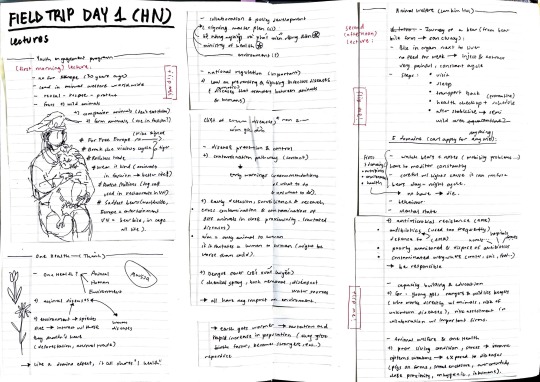
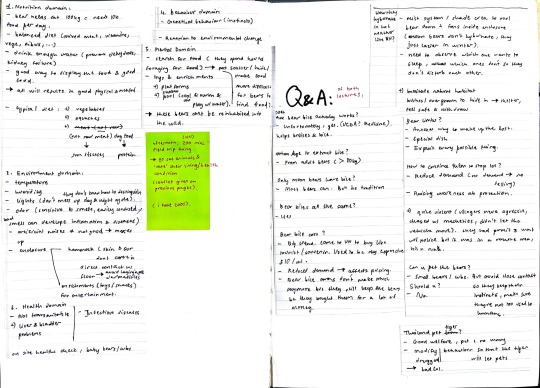
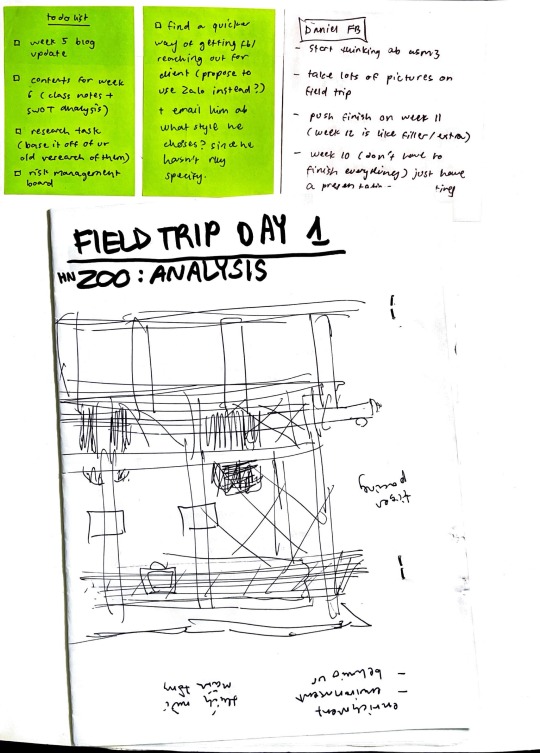
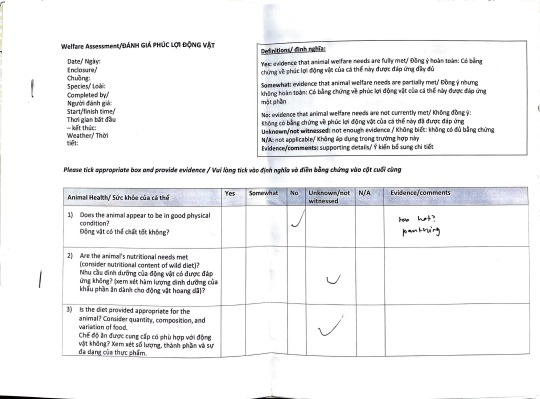
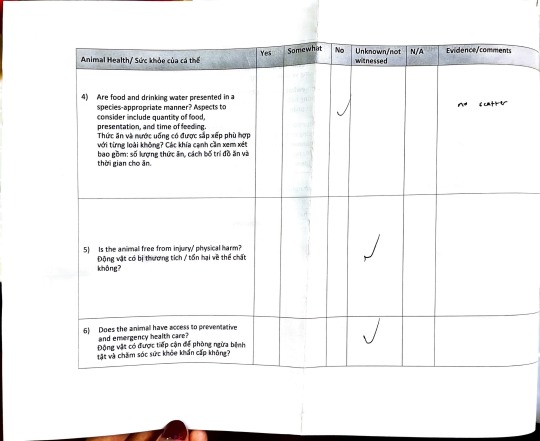
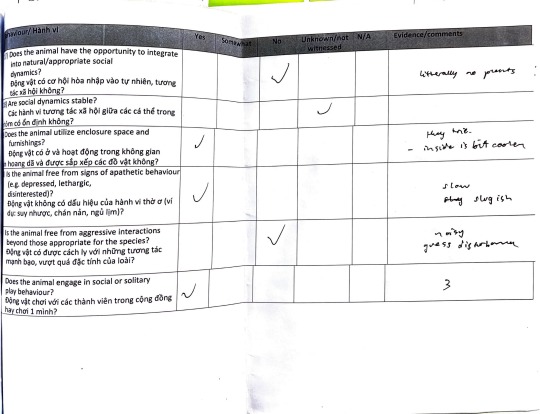
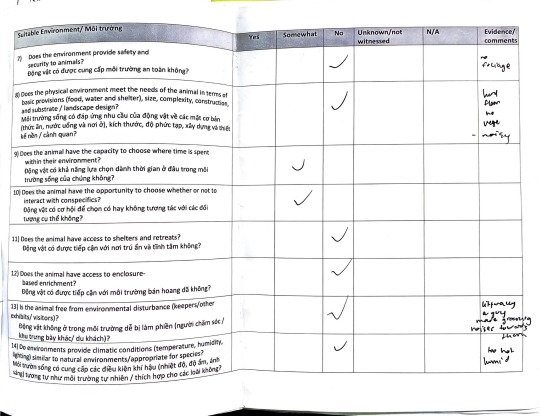
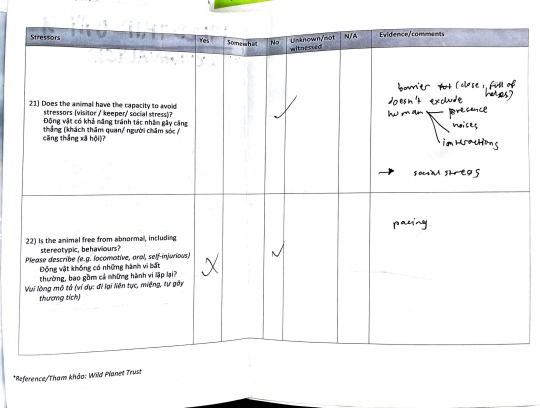
field trip 2 - Bear Sanctuary Ninh Binh (10th Dec)
walkthrough the sanctuary
interview the staffs, regarding the bear's diet, well-being and behavior
session meeting: animal welfare campaign discussions and group activity - creating visual ideas campaign about stopping bear bile
group session with client about the project, confirming about the narrative and brochure, music and questioning about bear farmers
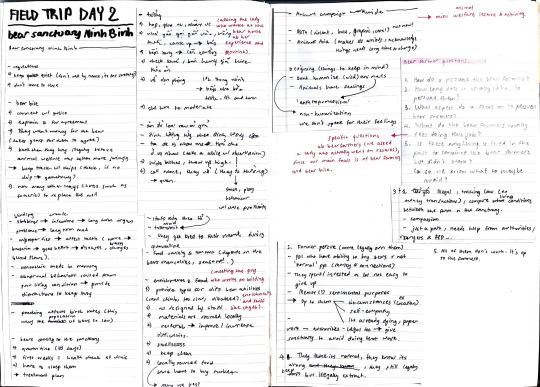
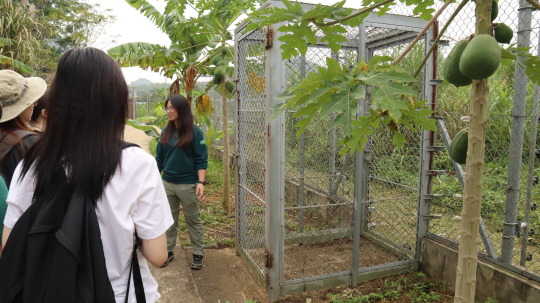



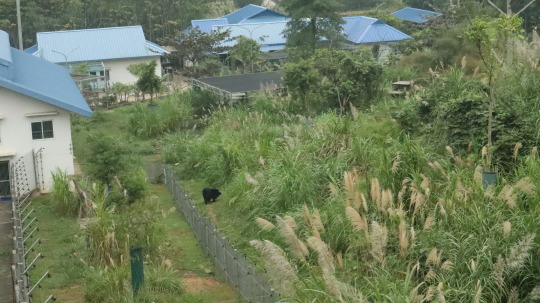

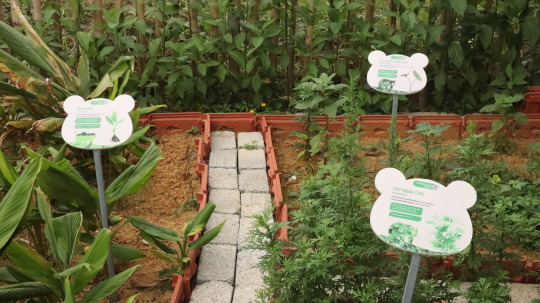
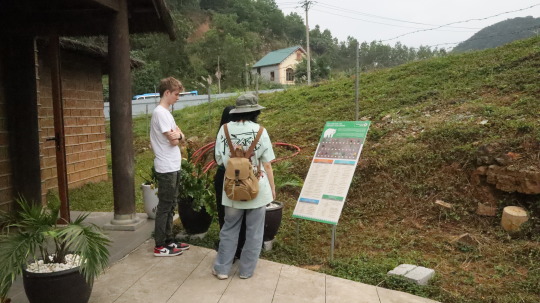
reflection
How might I use the Quality, Time & Risk Management techniques I learned about in class to improve my life?
These techniques will come in handy as it helps divide and section down a project's needs.
They also make me practice my planning, recording and organizing skill.
What do I want to do when I graduate?
I'm aiming to work for a studio (more specifically a game studio or an animation studio). I aspire to be a concept artist.
What existing risks are preventing me from succeeding in my plans?
Portfolio not solid enough
Perfectionism
How do I mitigate those risks?
Research portfolio applications for positions that I'm interested in, along with focusing on what that studio needs and is looking for.
Therapy or idk read self-help books (that targets creativity)
0 notes
Note
hey, i've been reading your Cisco-related Flash fics, and what struck to me as impressive is how you implement the mentions of tech so well. i've run into trouble into writing scenes, where Cisco might have to tinker. 🤧🤧🤧 i know this is by a long-shot, however, do you have any writing advice on how to add tech as part of a scene??? or like wording on how tinkering works?? idk just basic tech stuff i guess. thank you and sending good ~~vibes~~ your way!
Cisco tinkering is definitely fun to write, but I'm not exactly sure how to describe my process for writing those scenes. But I'll give it a shot anyway.
So Cisco's tinkering with tech in fics usually fits one of two scenarios when I'm writing. Either it's to give him something to do in the scene since Cisco's definitely someone who likes to keep his hands busy. Or it's a specific tech I plan to use for plot reasons, so it gets threaded throughout the fic. That way Cisco's brilliant ideas to save the day don't come out of nowhere.
If its the former, then I'll usually just pick something we know he's worked on in the show. The quickly forgotten Boot Tech (how useful it would have been if perfected instead of forgotten after the S2 finale), updates on the suppressant tech (the cuffs, Caitlin's snowflake necklace), the weather wand... I don't really have to go too much into detail on it, but it can be fun to poke at canon a bit for all the things Cisco develops that never show up again once their original use in the plot is over. Sometimes I just have him working towards perfecting something that didn't work as expected. Other times I have ideas for alternative uses for the tech that can be fun to mention.
I've also been a Star Trek and Stargate fan for a long, long time. So I've learned technobabble from the two scifi series that did it best. ^_^
Though, really, watching Sam Carter (SG-1) and Rodney McKay (Stargate: Atlantis) spout technobabble is a great way to learn how to make made up science blend with real science to sound relatively believable. Stargate (SG-1 particularly) was pretty good about grounding their made up science in real world concepts. Definitely having obsessively watched those two shows has helped shape how I write Cisco now that I'm in the Arrow verse fandom.
When I have Cisco's tech being used in a specific way for plot reasons, however, I definitely have to know ahead of time what the tech is for. If I'm going to make, say, the Rainbow Raider the villain of a story and have him experimenting with new applications of his powers - messing with emotions other than anger - then I'd have Cisco pull out the device they originally used to combat Rainbow Raider's powers to work on upgrading for the new scenario. That way it still works when they need it. Then I can throw in things like, maybe it gets pulled out of mothballs and immediately tried on one of RR's victims but it doesn't work. Cue drama. :D
I think some of the development process I put in there comes from what I know about tech development from a software side of things. Since I'm a software engineer, I know how different types of design and development models work. Waterfall vs agile vs... anyway, I won't necessarily ever name the dev model being used, but it'll influence how I write Cisco's development process and it'll differ based on when he's working with a team, vs one other person, vs on his own.
Having Cisco collaborate is especially fun to do. Cisco starts off as a particularly brilliant mechanical engineer and by the time he leaves the show he's become very much a multi-discipline scientist. He does so because he learns so much from the people he collaborates with - or competes with, as the case may be. Cisco's knowledge of sonic technology and acoustical engineering improves due to his exposure to Hartley's Pied Piper gear. He learns bio engineering from his many collaborations with Caitlin. Harry being rather multi-disciplined himself, often pushes Cisco to have more confidence in himself and reach beyond his comfort zone.
So I'll pick who he's collaborating on based both on when I want a story to be set, how AU I want it to be (Hartley joins Team Flash? Harry doesn't leave post S2?), and what kind of tech is being developed for the plot (improving the amnesia inducer they used on Barry? that calls for Caitlin).
A story that I've been wanting to write is Cisco mentoring Chester while Chester creates tech that - predictably, I admit - saves Barry out on the field at the end. We never really got the mentor/mentee relationship between them expanded on the way I'd been hoping for when it became clear Chester was a permanent addition to the cast. The story hasn't happened yet because I haven't really fleshed out what the technology they're working on will be. I'm probably overthinking it a bit at this point, but I want it to reflect where Chester's at mentally during the story - his struggles with self doubt and learning to be more assertive, generally showing why Cisco felt so comfortable leaving Team Flash in Chester's hands when he eventually leaves. (So it's intended to be canon compliant and set before Cisco and Kamilla leave for Star City.)
I don't know how useful my rambles have been, but I hope this helps.
2 notes
·
View notes
Text
PMP 7th Edition: Know What All Is Changing
One of the highly demanded Project Management certifications PMP (Project Management Professional) conducted by PMI (Project Management Institute) is undergoing a drastic change. The guide book for PMP, PMBOK (Project Management Body Of Knowledge), will soon develop the 7th Edition. If you are aspiring for PMP certification, you must be aware of the changes happening.
If you are new to the concept of PMP certification, you must be wondering what are we talking about. PMP is a globally recognized certification that helps validate your knowledge in IT and your skills as a project manager. People who wish to take the next step in their career can opt for PMP certifications as this will enhance their growth and knowledge in the field of project management.
What Is Changing In PMP?
The PMI (Project Management Institute) is the governing body that controls all the decisions for PMP certification, has decided to launch the PMI PMP 7th Edition by evolving the current syllabus of PMP.
Now, if you were planning to give the PMI PMP 7th edition exam this year, then hold on as you should know the facts and changes this new edition will bring.
Moreover, the summary of the 7th Edition can be noted as the approach will be based on principles rather than processes. Also, it will be shorter than the current Edition.
Why Was There A Need For Change?
While working on different projects, a project manager will have to apply different strategies, methods, and approaches to give the best output in a defined time. But, restricting the approaches will also slow down the growth of the project. The processes used by project managers are Practitioner, Agile, Waterfall, and Hybrid. However, a single project doesn’t need to favor a single approach. So, a project should be dealt with various principles rather than a single process.
Since the PMP certification is changing the guide for the examination will also alter. Here is a quick comparison between the PMBOK 6 and PMBOK 7 that will highlight the major changes in the guide.
Difference Between PMBOK 6 Vs PMBOK 7
PMBOK has been a constant companion for aspiring project managers who wish to endeavor success in this field. However, with the launch of PMP 7th edition, the guide for PMP will also undergo a drastic change. This will bring forward a new body of knowledge known as PMBOK 7.
Knowledge Areas:
PMBOK 6:
The basic difference that one can notice in the PMBOK’s is the knowledge areas focused. In PMBOK 6 the knowledge areas are accompanied by the following things- inputs, tools, techniques, and outputs.
PMBOK 7:
The PMBOK 7 includes tailoring, models, artifacts, and methods. Additionally, there are 8 performance domains.
The other changes that will be seen in PMBOK 7 guide are that it will be a shorter version compared to PMBOK 6. The last change in PMBOK was observed in January 2021. The next update will be seen in PMBOK 7 will be in August 2021.
Principle Vs Process-Based Approach
In the previous PMBOKs, the guide was in the form of knowledge areas. These areas included various processes, tools, inputs, outputs, and techniques. Whereas, in the PMBOK 7th Edition, these processes will not be there anymore. PMBOK focused on the deliverables for evolving the project dynamics in the current and previous years. Whereas, the new Edition of PMBOK will focus on the results.
However, the traditional methodology of project management, i.e., Process-based management, will still be in action. The value for the conventional method is still the same, and many organizations are using it for successful project completion. But, the new principle-based approach will give more results by adding value to the organization and the stakeholders.
This table will just highlight briefly the points of differences in PMBOK 6 and PMBOK 7.
Key Changes Introduced In PMBOK 7
There are some new terminologies added to the PMP 7th edition which will help the project managers deliver cost-effective and timely delivery. They are as follows:
Tailoring
The PMBOK 7 beliefs that project management is not based on a single approach. Project managers can follow different methodologies to get desired outputs in projects. A project manager will tailor the approach according to the needs of the project, deliverables, and organizational demands.
Models, Methods and Artifacts:
The aspiring project managers can now seek guidance from the videos, articles, and templates that can enhance their productivity and knowledge in a defined domain.
Aspects influencing the Changes In PMBOK7
To get a change in the existing things, one needs to have significant points that support the demand for the alterations. The last change in PMBOK was done in 2017, and since then, the format has not changed much. However, with the launch of PMBOK7, some new yet drastic changes will be seen.
Let’s glance at the fundamental points that have influenced this change.
1. Value Delivery System
PMBOK 7th Edition will be an approach that will act upon the value delivery system. It will systematically define the strategies, objectives, and missions decided by a company. The projects will be conducted based on these further investments. To make sure that the purpose of the portfolios, the project delivery must reach its pre-set targets.
2. Project Delivery Principles
The ‘what’ and ‘why’ aspects of project delivery will be mentioned on the PMBOK 7th edition principles. The fundamental principles included in the project delivery describe the norms and fundamental truths and are not prescriptive.
Principles Of Project Delivery:
Team: Building a good work culture of respect and accountability
Stewardship: Being responsible for duties
Value: Focusing on core values
Stakeholders: Engaging potential clients by understanding their needs and interest.
Leadership: Motivate, teach, learn and grow
Holistic Thinking: Recognize and respond to systems interactions
Value: IT will focus on the values
Tailoring: It will make the approach based on the context of requirements
Quality: Build quality through process and results
Opportunities and Threats: It will help in addressing the opportunities and threats involved.
Complexity: Addressing the complexities with the help of learning and experience.
Adaptability & Resilience: Being adaptable and resilient
Change Management: Incorporate changes to get better results.
When Is PMBOK 7th Edition Releasing?
The official page of PMI has announced PMP 7th Edition release date as 1st August 2021. However, the exam syllabus will not change immediately. The implementation of these changes will be from January 2022. Simultaneously, this will give the time needed to the training institutes to update their syllabus and prepare the study material accordingly. To find out more, you can visit the official page of PMI where you can get a PMP 7th edition PDF to check the latest updates added in the PMBOK.
Should You Wait For PMP 7th Edition?
Are you in a dilemma with whether you should wait for the new edition to give the exams or continue with the old method? The answer depends upon your preparation. We expect to succeed in every exam that we give. So, once you are fully prepared and well versed with all the mock tests you can attempt the examination. But it is not easy to prepare for such a competitive exam on your own and pass the exam on the first attempt. You can rely on a good PMP training institute like ZOC Technologies. The real-time learning, assistance guidance and mentorship of the experts will help you excel the new version of PMP certification.
You May Also Like To Read:
PMP 7th Edition FAQ’s Answered
Benefits of Enrolling Into Project Management Course during Pandemic
How to transform from traditional approach to hybrid approach of project management
1 note
·
View note
Text
Custom Software Developer
Software Developer Group has been in the simple process of computer programming for a decade and a half. Our team follows a highly disciplined software design pattern. We provide inclusive outsourcing solutions for software development outsourcing, a software technology consulting, software developer body shopping.
With the aim of delivering a robust sustainable product that meets customer expectations, we adopt one of the following software development life cycles:
Agile software development
Cascade Software Development
Often, companies that have a similar business domain and implement the same business strategies have a several-minute methodology that deviates. There is a unique and confidential aspect of every business organization that is not roofed in any readily available packaged software application. A packaged software application cannot fully and seamlessly meet the business intelligence needs of a particular organization.
This is where Software Developer, one of the best enterprise software development companies in Mumbai India, gets an upper hand among the pool of software providers in the market. Software Developer understands that despite the fact that a packaged software application can be cost-effective, it lacks the various functionalities that each company must have with and varies. In addition, packaged software applications are developed using outdated techniques and methods. Every software solution designed in Software Developer Group develops properly after closely studying every minute aspect of the clients business. All the latest and advanced technologies and approaches adopted by our developing teams to design our enterprise software development services ensure a high quality product at all times.
Nowadays, globalization is bringing markets and competition closer than ever. Therefore, it makes perfect sense for companies to outsource their software application development requirements. The major benefits of a custom software are personalization, scalability, integration and cost effectiveness with seamless support and maintenance.
Software Developer Group is the most preferred software outsourcing and software development company in Mumbai, India, which strives to provide operational and functional software development services. For a decade and a half, it has been offering innovative and cost-effective web and software development solutions to customers around the world.
We help our customers transform their critical business processes into efficient systems. We have efficiently distributed and implemented custom software development solutions for startups, enterprises and digital agencies. We are among the software development companies in Mumbai, India who believe in delivering excellence.
Inspired by focusing on customer expectations when developing any software, we emphasize customer satisfaction to pay attention to everything we do. And that's why we have earned the reputation of Mumbai, India's most trusted software company.
We are among the best software companies for software development services in Mumbai, India, catering to leading companies with our services. In the initial phase of project development, we engage our expert quality analysts, and this paves the way for your robust software application that is stable enough to run flawlessly on all browsers and screens. These analysts first collect the requirements for you to produce an all-inclusive business requirements document, which is given to software engineers for final development. There are several approaches to software project management, known as software development life cycle methodology or models. The waterfall model is the traditional version, different from recent and innovative models of agile software development. We follow a highly robust software development lifecycle to assure a consistent service of software delivery. We adopt modern software development methodology, agile development methodology, proven method to accelerate our software development rapidly, thereby significantly reducing the risk involved. We have a pre-defined process for software development, which includes coding, programming, testing, and fixing bugs identified or identified. A disciplined simulation of the most favorable software lifecycle, making our software development process completely reliable makes it an ideal software application for our customers.
As per your requirement and purpose, our software development services can be of various types and include the following packages: custom enterprise application development, migration of software applications, application or software consulting and redevelopment.
We provide custom software application design and development services to our customers with complete software maintenance services and support.
Our strength
Our team will guide you through the entire software development life cycle (SDLC), which includes understanding and analyzing your needs, designing, developing, debugging (software testing), deployment and software support services. We provide full cycle offshore software development services to our reputed international customers. Apart from full cycle software development, you can get on board, skilled and dedicated software developers with an average experience of 5 years.
We follow proven and time-tested software development methodology and its expert staff ensures that risk is minimized, if not completely eliminated.
Our offshore software development services are organized to meet the business requirements that you would expect from an outsourcing partner. By combining a wide range of technical experts with an exceptional commitment on client satisfaction, we have become a promising option for global companies looking for software development services.
Software Developer Group provides custom software development and consulting services to help you complete your next project with less stress and less cost. Our team has the technical expertise to power you at every stage of your software development lifecycle, from exploration to current launch-launch upgrades.
We are upgrading our expertise across multiple verticals and solutions and are now able to achieve success and no matter the specifics of your project.
Come see what we can offer for your extraordinary needs and requirements.
Benefits of our customized software solution
Business automation
Help companies automate their business functions that are not addressed by readily available packaged software applications in the market.
Maintain a competitive edge
Can empower companies to achieve benchmarks in competition. Our cost-effective business solutions for companies are designed using our domain expertise and unique functionalities that will encourage you to focus on core business competencies rather than implementing other business processes.
Efficiency
Our software development solutions can ensure the most prominent use of automation of business aspects by reducing manual errors, reducing the manpower and time required to complete a business task.
Business digitization
Our customized software solutions will help companies digitize their business properly and expand it to a new level.
Custom software vs shelf
Off-the-shelf software consists of a packaged software application, which is accessible to a different audience with fundamentally similar needs. For example, Microsoft Word is intended for the public at large as the widest scope of its users' needs. However, it will not deal with any specific entity like custom software.
Customized software development involves the commissioning, development, and launch of a software product tailored to a single specific entity. A customized software application designed for a company will only be used by the company and department for which it was designed. The software is designed keeping in mind the need for the company's infrastructure, branding and execution, which means that it can only work for that organization.
The advantage of custom software is a simple fact that provides the convenience that off-the-shelf software does not. Designing an application keeping in mind the needs of your company indicates increased productivity.
If you have a software application designed to increase productivity or meet an internal need, then its cost has a bearing with the promise of increased efficiency. If your company's requirement is unique to warrant for custom software, then optimizing a solution instead of settling for an off-the-shelf application becomes a smart course of action.
Below are the points that prove why we are the top software developers in India and the United States
We have successfully developed and delivered over 1500+ software solutions exceeding their expectations from our customers
Our extensible partnership helps customers optimize post-deployment business processes
We have developed customized software solutions for global companies such as Google, Motorola, Unilever, UTV, University of Florida, Kotak, and others.
We transform raw ideas into a comprehensive software solution using simple ideas and expert programming and designing skills
We are focused on designing and developing business solutions for industries such as software, technology, retail, eCommerce, logistics and shipping
We follow agile methodology and keep our customers in the loop to reduce the chances of system failure and adapt to changing user needs during the development phase.
We have a vast experience of implementing customized software solutions that increase business value and provide useful insights to set future goals.
The commitment to provide high quality and passion to implement challenging software solutions has served us various clients worldwide with 75% customer retention.
Our Price Coast model is specifically designed to provide highly productive and cost-effective offshore software development services.
Customer trust matters to us. Therefore, we ensure that the information remains confidential and secure by signing the NDA (Non-Disclosure Agreement).
The software developers of OpenExcel are the best among all software development companies in India and USA who believe in delivering excellence. We do not develop it only to give it a shape. We develop with the aim of helping customers achieve their goals.
A solution is developed. Our squad of skilled software developers are creators of excellent software applications using Core Php, Java, Node.js, Ruby on Rails, Javascript, Visual Basic.Net, C #, C ++ and Amazon Web Services (AWS).
With exceptional experience and comprehensive solutions across various domains and industries, we work directly with our customers and transform them into a high-performing organization.
We have adopted a modern software development method called Agile + DevOps which helps us to develop a robust and scalable solution with continuous software testing. The report, prepared by Forrester, underscores the key points of application development and delivery leaders (AD&D) navigating this change.
Our customers appreciate our efforts and ability to work according to their needs. This encourages us to create more unique solutions that add to our impressive portfolio.
We will guide you through the entire software development life cycle (SDLC), which includes understanding and analyzing your needs, designing, developing, debugging (software testing), deployment, and software support services.
1 note
·
View note
Quote
In this article, we'll discuss how agile principles and values can be applied to the way you approach data science projects. Project management methodologies are commonly used to get projects done or get a product (often referred to as a tool) produced. They are, in general, processes and frameworks which break down the overall objective to individual tasks organised on a timeline. This can be adapted and used to approach data science projects. In the past, the traditional Waterfall methodology (dated way back to 1970) has been very popular. It defines all requirements and parameters of the product at the start, so that the project team can work towards this target in sequential phases. This method has been successful in the manufacturing industry where product specifications seldom vary with time. It requires very extensive upfront planning, and ideally, the output product is exactly the same as specified in the beginning. But the Waterfall methodology started to become unsuitable for software projects. Because of this, many popular project management methodologies have emerged over the years, especially in the software development industry. Let me share the most popular one. Waterfall vs Agile. Figure by Author. Agile methodology Agile methodology was developed in 2001, and is a widely used to manage software development projects. It is suitable for fast-paced development cycles and has provision for changing specifications throughout the design and build process. It is flexible, and strives for iterative incremental improvement in the product through team collaboration. Agile projects are characterized by a series of tasks that are conceived, executed and adapted as the situation demands. Agile teams are responsive to the unpredictable requirements (as the project unfolds) through iterative work processes. Below are Agile principles which serve as guidelines to the way of working: Customer satisfaction through early and continuous software delivery Accommodate changing requirements throughout the development process Frequent delivery of working software, as the working software is the primary measure of progress Collaboration and interaction between the business stakeholders (client) and developers (vendor) throughout the project, including face-to-face communication within the development team Support, trust, and motivate the people involved Agile frameworks to support a consistent development pace Attention to technical detail and design enhances agility Simplicity in looking for solutions Regular reflections in the self-organising team on how to become more effective The focus of Agile methodology is not on what to do, but how to think. It values and places priority on: Individuals and interactions (rather than processes and tools) Working software (rather than comprehensive documentation) Customer collaboration (rather than contract negotiation) Response to change (rather than following a predetermined/fixed plan) Agile way of working. Figure by Author. Agile practices and Data Science While Agile principles and priorities are employed for greater productivity, most of them can be leveraged for data science (DS) projects. Moreover, data scientists usually do not know how to schedule a project because it is impossible to determine a specific timeline. Most DS projects require trial and error by going down different paths and trying different techniques. They do not have an element of certainty in the output, so Agile can be used to direct the workflow. Most other projects deal with what customers want, what the developers want, and what the business seeks. When working with DS, another perspective is added: what the data is telling you. Data scientists cannot make any sense out of the data unless they develop a basic understanding of it. There is a lot of investigation, exploration, testing and tuning. Agile uses the concept of iteration and constant feedback in order to refine a system under development, in order to move up the Data-Value Pyramid. Data-Value Pyramid. Figure by Author. When working on DS projects, insights are not immediately achievable. Multiple iterations are needed before any insights can be discovered. How agile practices can be applied I will explain the main Agile working practices (Scrum framework), and how they can be applied to DS: Define the business need and the project objective. This is usually driven by the product owner who is responsible for the product features and quality. It is the big picture stuff, but this is the core belief that you will refer back to as you build. In DS, the product owner could be the client, the business, or the end customer (for example, end user of a prediction tool). Understand what problems the product owner is facing and tailor the project proposal to meet their needs. Build the backlog. Focusing on the user requirements (“user stories” in Agile), a list of tasks is derived that you need to accomplish to build product features or improve product performance. The DS team builds the backlog together with the product owner to determine the product features and performance targets. The backlog could start from getting the data in the structured way before they can be analysed. Then it could be a list for feature selection or feature engineering, or a list of models to select, tune and optimise. Prioritise the backlog, identify the backlog tasks which will bring the most value with the least effort. In DS, not every approach is worth trying, so cover the most promising ones first. When the main ones are conveyed, you might find that the remaining others are not as important as initially thought. Do a sprint (the actual development work). Sprints are usually two-weeks cycles where high priority tasks on the backlog are worked on. In DS, each sprint could be two to four weeks depending on the team size. During the sprint, always complete the task with the highest priority before moving on to the next in line. Have daily standups. Standup meetings are for team members to be accountable to one another on their progress in the current sprint. Each team member take turns reporting their status — what was done the day before, what to do today, any potential obstacles. The most effective communication happens when DS team members meet face-to-face to share their work. Review the sprint output (sprint retrospective meeting). At the end of two weeks, there should be a functional output for the project team to demonstrate, with an incremental improvement in the product. Data scientists should share the outputs before trying to perfect the processes. Get feedback from client stakeholders and prepare for the next sprint. Regular feedback is a key principle for the Agile way of iterative incremental improvement. Prepare for the next sprint. Identify the tasks that are going well and keep doing them, and identify those that are impediments to be removed. It is important to understand that, unlike software development, DS is more experiment-based than task-based. DS helps explore data so it should be treated as multiple research experiments. Once again, build and prioritise the backlog so that the next sprint can be carried out, to work on the next improvement areas. Roll out the final product. When all stakeholders agree that no more improvement is needed in the product, it is ready for the final deployment. DS projects follow the “law of diminishing improvement”. For example, if a model has achieved 70% accuracy, the next 5–10% improvement will take a lot more effort than before, and it also depends on the limitations in the data set. Decide in the team whether the efforts are worth the incremental improvement. Photo by You X Ventures on Unsplash Challenges with the client Besides having adequate communication between the DS team and the client, the client’s expectations have to be managed. All clients generally love the idea that Agile is flexible, and that it grants them more opportunities to change their mind as the project develops. However, they might not realise that such flexibility is also costly in both time and money. Here are some things you should do: The cost of flexibility Get the client to understand that flexibility is inevitably expensive. It is like how a flexible full-fare economy ticket which allows itinerary changes will cost much more than the fixed one. Making changes also means that the client is paying for past wasted time and effort. Set expectations Set the client’s expectation to commit time for frequent sprint retrospective meetings (e.g. every two weeks) to evaluate the completed sprints. On top of that, the client representative in each meeting needs to be (empowered by higher management) able to make decisions on product specifications. For Agile to work, the client needs to provide continuous feedback and priority setting to keep the project moving. Trust is important Earn the client’s trust and show them that each iteration is done with the best possible efforts to deliver value and improve the product. While holding the decision making power, the client also expects an iteration to have tremendous improvement. Such imbalance in responsibility in the client-vendor relationship should be converted to mutual trust and willingness to experiment together. Agile’s principle in collaboration means it is a team effort in both making decisions and delivering value. Photo by You X Ventures on Unsplash Minimum Viable Product One key feature of the Agile way of working is the development of a minimum viable product (MVP). This is the most fundamental configuration of the product (or tool). After the project objectives have been defined, the team makes a proposal regarding the approach to the problem. This includes building the MVP within the shortest possible time (like one month for DS projects). The MVP has only the most important functionalities, but its performance may not be the most optimal. This might seem very risky – putting a less-than-finished version up for the client to test. So the team (including the client) has to be prepared for it. The purpose is to make the MVP work, test it, and see if it is really going in the correct direction of solving the problem and helping the business case. The MVP will grow better, because the DS team is going to use what they have learnt from the MVP feedback to build an improved version. Agile is about continuously deploying and learning from your mistakes, and working with the client to make the product better. Iterative nature of Agile. Figure taken from TowardsDataScience. Agile is to plan, build, test, learn, repeat. DS project deliverable Agile methodology allows data scientists to prioritize and create roadmaps based on requirements and goals. With each iteration, data scientists can learn something new, get more refined results, and ride on them for the next incremental improvement. Below are some Agile project deliverables to shape and guide project process: Project vision statement: A summary that articulates the goals for the project. Project roadmap: The high-level view of the requirements needed to achieve the project vision. Project backlog: Ordered by priority, this is the full list of what is needed to support your project. Release plan: A timetable for the release of a working product (or tool), but not documentation. Projects should be self-documenting along the way. Sprint backlog: The user stories (requirements), goals, and tasks linked to the current sprint. Increment: The working product functionality that is presented to the stakeholders at the end of the sprint and could potentially be given to the client. Summary Agile methodologies are expected to become more common for DS projects in the near future. Many data scientists have reported that it makes them more productive. This is not because the data scientists have become more skilled, but because Agile can help them optimize their projects. Instead of spending time on models that are unlikely to reveal any productive results, it is better to spend that time for other result-driven purposes. Being “agile” (flexible) means you need to adopt a dynamic approach in planning and be adaptable to the changing needs of the new situation when it arises. The Agile environment appeals to quick action, fail quickly, discuss and evaluate, then try again using a different approach or an improved method. It works great in dynamic environments where there is a potential for changing or evolving requirements.
http://damianfallon.blogspot.com/2020/03/how-to-apply-agile-methodology-to-data.html
1 note
·
View note
Text
So like last night I found a project I started back in like November/December last year, I wanted to “novelize” the batman arkham games while...tweaking the story a bit to flow better in some places (I love the series over all but there were parts I felt...needed help)
so I guess that counts as a fan fiction
I was told a few weeks ago by steph when I was having issues with my views on my writing ability that I need to not make some BIG project but I need to try something...smaller, I guess this would count maybe
so I’m just gonna put the first section I wrote below the cut
I haven’t finished the project, I got like 140ish pages but yea
I’m stating this AGAIN because I know SOMEONE will say it if this is read- YES I did try to novelize/write the Arkham Game series as a prose vs a script so no its not some “you’re ripping off the games”
...that was the point, I wanted to see if I could take it and retell it in this format and see if it came out as good.
The last will and testament of the deceased, Thomas Wayne: In the event of my death, I hereby declare that all my worldly possessions pass to my son, Bruce Wayne. Bruce, I ask that you honor the Wayne family legacy, and commit yourself to the improvement of Gotham City, its institutions, and its citizens. Please, be strong. You are young, but destined for great things. Make the most of your opportunities. Use them to give back to a city that has given us so much, to change the lives of millions of people. Do not be frivolous with this wealth. Please, do not waste it all on fast cars, and outrageous clothes, and the pursuit of a destructive lifestyle. Invest in Gotham. Treat its people like family. Watch over them and use this money to safeguard them from forces beyond their control. My deepest regret is I will not see you grow into the good man I know you will become. And finally, my son, I ask that you never abandon this city to fate. We have lived through dark days, and no doubt there are more to come. But it is the good and great men who stand up for Gotham when others turn and run. In death, I will love you forever. Your father, Thomas."
—Thomas Wayne
~~~~~~~~~~~~~~~~~~~~~~~~~~~~~~~~~~~~~~~~~~~~~~~~~~~~~~~~
The cave was dark, damp and cold which was normal. However there was a bitter extra coldness tonight, colder than most nights, it was Christmas eve and the sun had been set for hours now, the snow outside had been falling for hours. As the elevator carrying it's occupant reached the bottom and opened its doors, a large collection of screeches and flapping echoed throughout the cavernous space. The colony of bats screamed as this person disturbed their slumber and awoken them with his large machinery. They tore through the cave, flying every which way until after a few moments descending deeper into the depths of the cave far from sight and sound. Only echoes of their cries and flapping remained for a short time. The occupant stepped out of the elevator with purpose, a stern and almost rage filled expression on his face. The height of his persona felt increased only by the shadow he cast as he strut through the tunnels towards a much larger, open cave filled with lights and equipment. The far side of the cave was a large waterfall, pouring down and blocking an opening in and out of the system that this man had made his base of operations. The large space was filled with computers and machinery on one floor; and in the center, a platform with a black as night flying craft.
The body suit on the man covered him from neck to toe. Made of a tight weave that protected his body from the cold that filled the cave and the outside as well, he also wore heavy armored boots. This man stood 6'0 and was built sturdy. Not massive but stocky enough that you knew he could throw a punch, though outside this dark cave he never gave the impression of that. An angry man, he never seemed to do anything about his anger in public. He couldn't, he had an image to maintain.
Bruce Wayne made his way to the series of monitors and computers, patching into the local news stations and the Police radio bandwidth. As the different frequencies and channels came into focus one monitor displayed News crews attending a press conference at Black Gate Penitentiary. A decorated officer on the screen at the podium was heard mid speech.
"...knowing tonight, we put to rest one of Gotham's most heinous and relentless killers of our time- Julian Gregory Day."
One of the reporters in the crowd spoke next to the assessment.
"Commissioner Loeb!, Commissioner Loeb – any comment on rumors circulating that it wasn't actually the GCPD who found, apprehended and delivered Mr. Day to custody?" He asked, his voice a little evident of the cold weather over at Blackgate, but strong and convicted in this line of questioning none the less. At this the Commissioner left the podium and a man in his early to mid thirties stepping up to replace him, his glasses fogging a bit from the temperature, the man had auburn hair and signs of facial hair forming on his face. He wore a GCPD jacket over a Policeman's uniform and bullet proof vest, he must have been on assignment before arriving or he felt better to prepare for anything tonight at Blackgate.
"There is no such thing as a bat-man!" Captain James Gordon spat in response to the question. His hand pointing to enunciate each syllable for the crowd. Which of course got a buzz from the reporters. All of them shouting Captain Gordon, over and over trying to garner his attention to ask follow up questions. Camera flashes created a strobe effect on the screen as Bruce half paid attention while looking over at another screen and filtering the sound to that monitor instead of the news.
"All Units, all units, Code 10 at Blackgate Prison! Communication is Down. Possible 2-11." A woman's voice filtered through on the Police Scanner. Behind Bruce, an older man, dressed in a nicely pressed tuxedo, carrying a dome covered silver dinner tray quietly entered the cave and watched and listened to the sight before him as he made his way to a table where he softly lay the dinner tray carefully next to a brass framed photo. A black and white family photo of a slightly middle aged man, his beautiful wife and young son. The three looked happy, and the young boy's smile was ear to ear, teeth shining on his face and a sense of prosperity came from the photo as it reflected off the surface of the tray next to it. The older man gazed for a half second at the photo before returning his attention to his master. Alfred Pennyworth, never too thrilled with Bruce's decisions to take up this crusade, gave his undying support regardless because he had served this family for as long as he had. Raising Master Wayne since his parents' death Alfred couldn't help but wonder what the late Thomas and Martha would think of their boy tonight.
Gone was that smiling happy boy, and replaced by a hurt and angry young man. At 28 time had barely tempered his scars. Only inflamed them. Taking a multi year journey around the world, learning many forms of Asian martial arts. Bruce would travel to China, Japan, Thailand, eventually winding up in Korea. In North Korea he found a secret Korean castle, where he would meet the Martial arts Master: Kirigi. The master would take Bruce in as a servant while he trained with his other students in TokagureRyu and other Shinobi.
Knowing an art similar to Japanese Ninjutsu, Kirigi trained Bruce in the ways of the shadow warrior. Learning how to use the shadows, devoting himself to a single ideal and in that devotion learn patience, develop agility, master deception, partake in theatrics and utilize the power to fight 600 men. But most of all Kirigi instructed Wayne in the method of using fear. Two years ago Bruce had returned from this trip and filled in Alfred of his success under Kirigi and how this meant he could begin his crusade to save Gotham. It was then he took up the cowl as Batman.
"Delta 6-4 Enroute" a mans voice broke Alfred's concentration on those memories, reminding him that Master Wayne needed him in the now, tonight was a sordid one. Being Christmas Eve, Alfred had hoped that Bruce would stay in tonight, be a normal billionaire playboy for the cameras on Christmas, however for another year, he shooed away reporters wanting interviews with the young rich industrialist and instead took up his only focus- the mission.
"Dispatch 5-9. Confirm code 10- this a break out?" Another man came through the radio.
"Suspect identified as Black Mask. Repeat: Code 10 suspect is Black Mask. All Units at Blackgate. Code 6 Code 6. Commissioner Loeb being held captive. Repeat. Commissioner is 701." The woman's voice repeated with urgency. On one of the monitors in front of Bruce a file had opened and revealed many pictures of a man in a white pinstriped suit wearing a black skull mask, all with information filtering in along with the photos. Bruce had collected as much information on this man as he could. Black Mask- the alias for a one Roman Sionis. Alfred's gaze followed as Bruce crossed the space from his computers to a spot on the platform they stood on as it raised from the floor, a glass case with metal framing. Inside spun something Alfred had grown accustomed to seeing, and sometimes repairing when Master Wayne was too overzealous on his night's out. The tailored suit of the vigilante. The mantle Bruce claimed after returning home from his trip abroad. The mask he wore to enact his mission to save and protect Gotham, his home.
The Batsuit was black and gray, an armored and caped body armor he could wear to hide his face and protect himself from the scourge of Gotham's dark underbelly. Bulletproof, knife-proof, however the suit did lack in some flexibility leaving Bruce forced to have stiffer movements and have to be deliberate in his actions. For now it suited him well, protected him and struck fear in those who saw it before he beat them into unconsciousness. Designed to withstand or significantly reduce the impact of bullets, the armor up til this point has allowed Batman to barely flinch when shot, causing a psychological strike in those attacking him, fearing that the urban myth that was batman- was impervious to bullets.
Suiting up, and going from the public figure of Bruce Wayne to the legend that was spreading in the city. The enigmatic shadow that struck out and launched a violent onslaught on those who would dare commit crimes in the city. Someone who was the reason thugs collective breathed sighs of relief upon the rising of the sun each morning. Batman. Gathering his equipment as well, a grappling hook gun, a collection of shuriken that were in the shape of bats, and other assorted equipment donned his large belt at his waist. When he was fully equipped with his gadgets and ready to go, he slowly reached back into the container where his suit was housed to lift the cowl and bring it to his face. Sliding it down and over Bruce Wayne's profile snuffing him out for the night. Awakening the other- the Batman to his next patrol. The night had begun and Batman was needed.
The large craft in the center of the cave roared to life as Batman pressed a series of keys on one of his gauntlets. Lifting itself from the ground with loud engines the VTOL hovered in wait for it's pilot to embark them in their starry night flight across the Gotham skyline. Batman marched towards it, his cape billowing behind him wildly as the engine's caused a powerful draft from their force. Batman could just barely make out Alfred's voice behind him.
"You do realize it is Christmas Eve, sir?" The butler called, his arms out and making a hopeful gesture that he could assuage the Bat into taking the night off. However this hope dashed as Batman climbed into the control seat of the jet and rose into the craft, doing last moment system checks of his vehicle. Alfred resigned his hopes and made his way across the platforms to retrieve the dinner tray he had originally came down to the cave with. Knowing he'd better leave it upstairs in the kitchen so that if Master Wayne returned hungry he could heat up his dinner. Alfred Pennyworth would die on the spot the day he served anyone a cold Christmas Eve dinner.
The Batwing rose higher in the cave, it's wings folding down, extending to their full length in readiness to exit it's lair, Batman inside gripped the controls tightly and focused his vision on the horizon line as the Batwing faced the waterfall and screamed out of the cave at an intense high speed. The waterfall barely breaking under the Batwing's trespassing on it's path downward. Batman piloted his craft at top speed to reach Blackgate as soon as possible.
#JM wrote stuff#batman#arkham series#I guess this is fanficiton?#I dunno I avoided fanfic forever#but I'm trying something steph suggested because well my view was narrow and causing me problems#considering putting it all on a drive if someone wanted to read more than this
6 notes
·
View notes
Text
Comparison Between DevOps And Agile
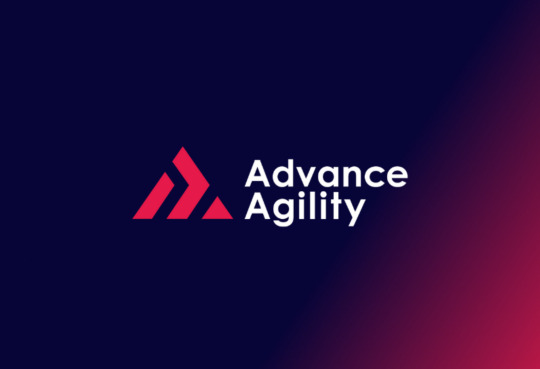
“Agile and DevOps are for harnessing integration, interaction and innovation.”
- Pearl Zhu
Software Development Cycle
Software Development Life Cycle (SDLC) is a structured practice used to build software applications for an online business where the customers can easily surf through the products to buy. SDLC consists of six important phases where each one has its own process and deliverables to move on to the next phase. The stages are planning, requirement analysis, designing, coding, testing, deployment.
Post discussion between the client and development team, the process of building software commences with the appropriate SDLC model according to the client’s requirements. Some of the popular models that enhance the development process are Agile and DevOps methodologies. By following the Agile Fundamentals and DevOps culture high-quality products are produced.
What is Agile Methodology?
Agile methodology is an approach introduced to overcome the challenges faced in the Waterfall model where the development team and operations team faced conflicts in deploying codes. Agile model processed with clearly defined iteration method to produce better end results by breaking the process into micro processes. This model is practiced when,
Frequent changes are required.
When a highly skilled team is available.
The client is ready to have meetings with the software team frequently
For smaller projects.
And programs like Certified agile leaderships guide the team members to identify the tasks better to improve the quality of the deliverables.

What is the concept of DevOps?
DevOps is a culture that promotes collaboration between Development and Operation teams to reduce the conflicts and increase the organization speed by implementing continuous integration with the use of multiple tools like, Git, Ansible, Docker, Jenkins, Puppet, Kubernetes, Chef and Nagios at the different stages of the process in delivering high end products for the clients. These tools help in providing DevOps solutions instead of spending a lot of time in designing, testing and deploying codes in isolation work models.
DevOps creates an opportunity for both the teams to work together continuously. Because of which the DevOps engineers are highly in demand. To fulfil the requirements of clients and work efficiently as a team, it is important for the team members to gain better knowledge about the tools and be skilled at using them by undertaking DevOps training programs available for programmers.
Some of the key features of DevOps methodology are:
High speed
Continuous Integration
Collaboration
Reliability
Security
Continuous delivery
Practices in Agile
Here are some significant agile fundamentals that needs to be followed by agile team to work efficiently:
Self-managing teams that can divide the work into micro increments to complete in an iteration or sprints.
Setting on communication guidelines is important to avoid conflict among the team members.
Motivation to build projects with trust and respect.
Focusing on product backlog prioritization.
Scrum master who can teach and facilitates team members effectively.
Agile VS DevOps
Basically, to produce maximum results in designing a proper software application, companies prefer to adopt both Agile and DevOps methodologies. Some of the key functions of both the approaches are:
Agile encourages collaboration between the developers and product management. DevOps emphasizes collaboration between development and operation teams.
DevOps approach is considered to be the missing part of the agile model.
The Agile model prioritizes individuals, communication and responding to changes. DevOps works on the development process and running applications.
Ultimately, both the approaches share the same goals to increase the speed and quality of the software development process.
The Agile model consists of frameworks like Scrum and Kanban that help improve the quality of the team, which can be learned through programs like certified agile leadership.
As DevOps requires tools to increase the efficiency of the team, DevOps training programs help them to use multiple tools in practical examples.
Title Description
1. What are the Agile Fundamentals?
1. Agile fundamentals or principles encourage continuous collaboration with clients.
Constant updates and continuous delivery of results.
Delivering on a fixed timescale.
Rules of collaboration need to be followed.
Team members are empowered enough to be self-reliant.
2. Benefits of having a Certified Agile Leadership in a project
Improved time management skills. As projects are planned out in agile models it is important to have a clear idea about the type of schedule that needs to be followed.
Trains you to manage the ebbs and flows of a company.
Helps you to set realistic goals to get maximum results.
When you possess a certified agile leadership, you make an impact with your proper strategies.
Your relationships with company and customer improve and strengthens with time.
3. What skills are acquired through DevOps Training?
Every industry is following DevOps culture to produce maximum results. And companies are looking for DevOps engineers more than ever with proper skills to tackle the tasks efficiently.
Here are some skills recruiters are demanding for in a DevOps engineer which can be acquired through training:
Knowledge in Linux fundamentals and scripting languages like Python, Ruby, Pearl etc.
The candidate gets well versed in tools like Puppet, Chef and Ansible on Linux. And other DevOps tools and technologies used at different stages in DevOps methodology.
The DevOps engineer not only gets to know about the tools also learns to use the tools in appropriate stages of a production process.
DevOps Training also helps engineers to cultivate a positive relationship with clients and company.
About Advance Agility
We, at Advance Agility, are the new-age Agile Coaching, Consulting and IT services company. We enable end-to-end Digital Transformation. Agile execution is integral to our being. We are doing SAFe implementation with small, medium and large organization across the globe. Our vision is to be the leading Agile execution player globally. To keep adding value at every process stage. We are on a mission to empower our clients, move from concept to cash in the shortest sustainable lead time by adopting human centric approach to business agility. Embracing the change is in our DNA. Things that keep us apart are Quicker and Seamless execution with End-to-end gamut of services. Our Global presence and Stellar Track Record give us an edge over our competitor.
Connect with us at advanceagility.com to learn about SAFe and SAFe Implementation. We provide various SAFe certification courses along with DevOps, Scrum, Agile Coaching and more trainings. Write to us at [email protected] for any agile training or consulting needs. We are always looking for competent agile trainers as well. So if you are a good trainer or want to become one, do get in touch with us to that we can learn, grow and achieve together.
0 notes
Text
Soul Silver! The pokemon League!
February 7th
Will

Ok first one should be easiest! Except I dont give Ninetails dark pulse! I quick switch to feraligatr and take a psychic getting the sp.def drop such is my punishment. Fortunately Xatu now goes for U turn and switches to jynx as I get a Swords dance off. I would have preffered two but I know Jynx is shooting for lovely kiss. I use crunch to take it, Exeggcutor and the first xatu out. Next come slowbro! Now unfortunately there is only a 50% chance of OHKO here and honestly if I don't I think feraligatr is out! Fortunately I get the attack and then its one more quick Crunch for the win. A stupid early mistake but all good in the end.
Bruno

Ok so this is gonna be a real ninetails sweep now. And it goes almost without a hitch. I use 2 nastyplots on ariados taking a poison jab and a spider web. This sets me up to OHKO the rest of the team. The only issue is Crobat who does outspeed and uses double team. My flamethrower misses and on the next turn he gets a critical hit wing attack. Ninetails survives in the red as predicted and sitrus berry brings her back this time flamethrower hits which allows me to take out the crobat and the final venomoth for the win.
Bruno

Phew no where near as hard as expected. Hitmontop does practically nothing especially when burned by ninetails. This allowed me to switch into feraligatr (higher defence just in case) get off 3 swords dances and sweep with waterfall all 5 pokemon. Easy!
Karen

Definitely the toughest battle. I lead with machamp to OHKO umbreon after he uses double team. I specifically kept vital throw over cross chop for this. Next comes Murkrow who does outspeed and gets a critical hit wing attack. Fotunately Machamp survives this even with 2 round of poison and also OHKOs murkrow. He must switch now however. I jump into ninetails vs the gengar and get a nasty plot off as it misses with focus blast to take out the next turn with dark pulse. Unfortunately houndoom comes out next and absolutely walls ninetails so I switch to feraligatr to get the OHKO with waterfall before going back to ninetails to finish of the vileplume with a flamethrower after it uses stun spore and gets a critical hit petal dance on me. A little unfair but I am very well set up for this final battle.
Lance

OMG Lance is scary! After doing some calculations I genuinely dont think Mamoswine can do it on his own without a sack. So I'm in a rough spot. Normally I would lead ampharos to take out gyarados but at this point I need a change in strategy... I am going to go for a feraligatr Ice fang sweep Its safer and I can cripple gyarados.
I lead STANTLER! against gyarados already feeling the wipe coming. This is to get intimidate off and set up a light screen. I then switch into Feraligatr on a waterfall that does basically nothing. Fortunately each of gyarados' attacks can only do very little so I get all 2 sword dances set up (an agility might have been a good move to bring to this too). Now to get through gyarados which is actually a bit of a wall. I use crunch which has a 50% chance to OHKO and it gets through. Next up is the Thunder dragonite. Fortunately I outspeed just i think and get off the ice fang for an OHKO. Next is another dragonite this one outspeeds which is why I think I just beat the cap with the last one. Fortunatly again its dragon rush misses and I can OHKO again. Next is Aerodactyl which does outspeed with thunderfang but it does a decent chunk. I am regretting not paccing a waccan berry. Fortunately the sitrus berry is triggered and I go back above yellow. A waterfall takes out the aerodactyl and the charizard which also outspeeds with air slash. Bringing me low. Finally is Dragonite. I am terrified of another outspeed but cannot afford to switch and lose momentum. I go for it and outspeed for one final Icefang winning the battle! This was too chansey but I got through in the end. My plan paid off. Honestly Swords dance is an OP strategy but if it aint broken don't fix it! I'm glad I could win with my starter it feels good!
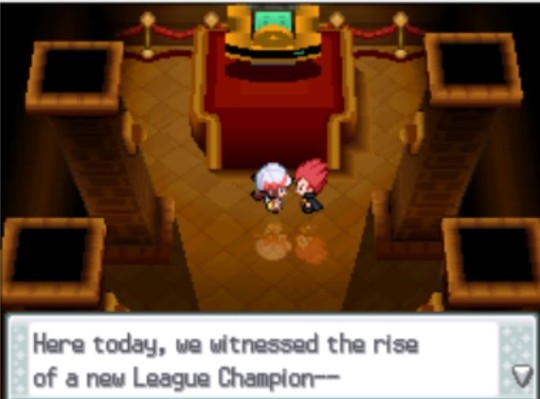
#Pokemon#pkmn#pokemon league#nuzlocke challenge#nuzlocke#soul silver#gen 4#johto#ninetail#feraligatr#stantler#machamp#ampharos#mamoswine
0 notes